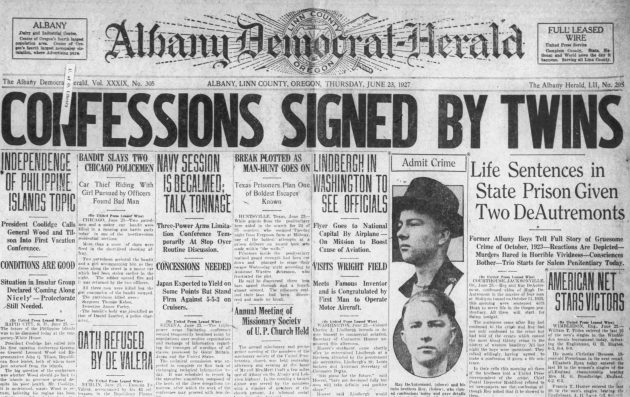
The front page of the Democrat-Herald on June 23, 1927, reported the end of the Jacksonville trials of the “former Albany boys” for the Tunnel 13 murders in 1923.
On Thursday I sat outside the former courthouse in Jacksonville where, 96 years ago, three “former Albany boys” were sentended to life in prison for killing four men in the last train robbery of the West.
They had committed their killings nearly four years before their last day in court. Wednesday, Oct. 11, was the 100-year anniversary of what became known as the robbery at Tunnel 13.
The centennial was noted in various ways in Jackson County. The post office in Ashland even offered a commemorative cancellation. I thought it might also be useful to commemorate the four railroad men who lost their lives that day at the remote tunnel in the Siskiyou Montains. That’s why the video:
The killers, twins Ray and Roy De Autremont, 23 when they help up the train, and their 19-year-old brother Hugh, had lived in Albany during the winter of 1921-22.
They were identified as suspects within days after the crime, and the Albany paper reported on the local connection.
Their father, Paul De Autremont, had come to Albany from Salem a few years before and was working as a barber in one of the Albany barbershop for a while. Then he moved to Eugene to continue his trade, and he lived there when his sons became outlaws and the subjects of a worldwide manhunt that lasted nearly four years.
In the papers, the spelling of the last name varied. It started as D’Autremont and then became DeAutremont.
On Thursday, I leaned the bike against a display case outside the Jacksonville City Hall, the former courthouse. The display has a summary of the Tunnel 13 story.
The Tunnel 13 case was the last trial to be held at the Jacksonville Courthouse before the county seat was moved to Medford. Hugh had a jury trial. His brothers were brought to Jacksonville as Hugh’s trial ended and confessed. All three got life in prison.
The former courthouse has been remodeled as the city hall of Jacksonville. I remember visiting the courtroom upstairs year ago when it still had a jury box and the judge’s bench. Now it is a very well appointed council meeting room, with comfortable seats for the audience and lots of video equipment.
The wood-framed windows probably look the same as in 1927, and the exterior of this handsome building has not been changed much either, if at all. (hh)
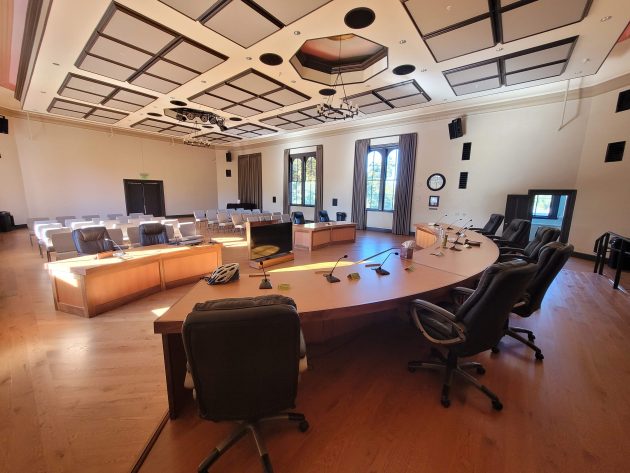
The former courtroom now is where the Jacksonville City Council meets.
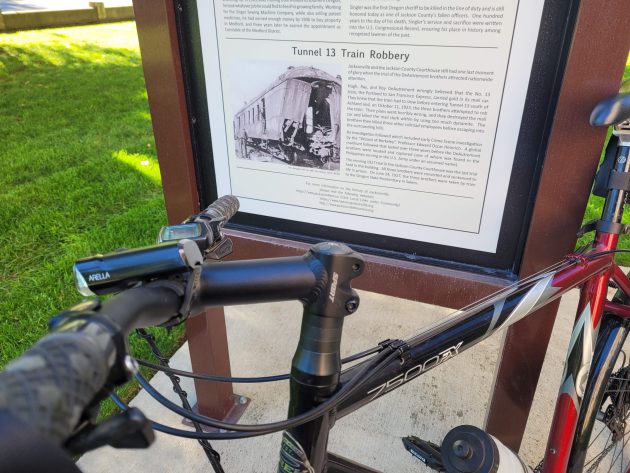
The Tunnel 13 robbery is summarized in a display outside the historic courthouse.
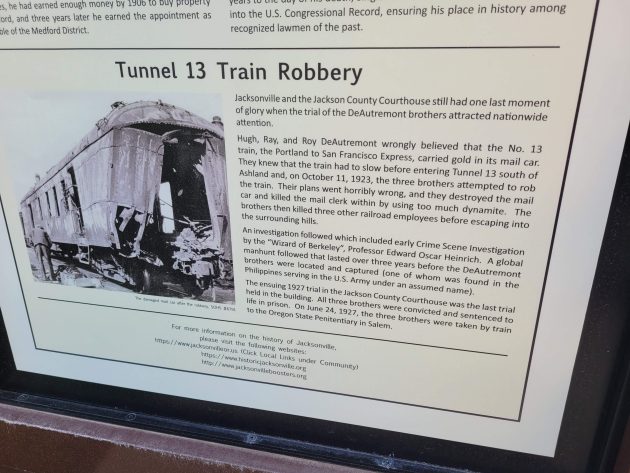
Maybe you can blow this up so you can actually read the text.
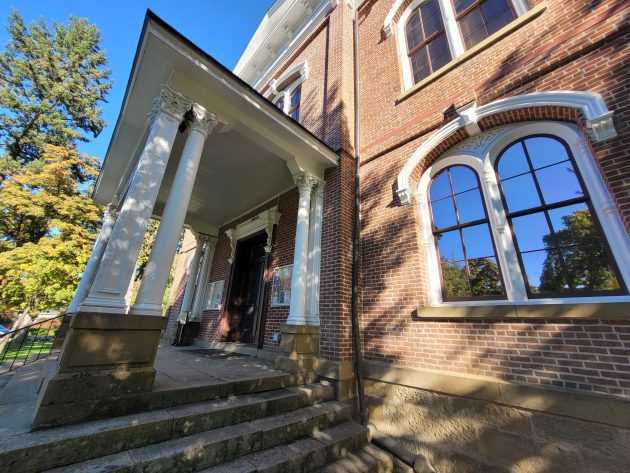
The entrance to the historic courthouse where the De Autremonts were sentenced.



Interesting story.
But I’d like to digress just a little bit and comment on your photo of the room where the Jacksonville City Council meets.
It looks like they do not (symbolically) set themselves above their constituents. In fact, it looks like the councilors are seated slightly lower.
In comparison to Albany’s dais, what a refreshing, subtle message Jacksonville is sending.
Kudos to them.
Actually, the J’ville council table sits on a slightly elevated platform. The difference is that unlike Albany’s, the Jacksonville council does not sit behind a parapet that sometimes hides members unless they sit up straight and lean forward.
Interesting story. Thanks for sharing more Albany history.
Your video rightly acknowledged the four men who died while working a hard and necessary job. We usually focus on the criminal actions as they effect our society and the actual victims are not recognized for what they contributed to society. Kudos to you for giving them value and recognition of what was actually lost that day.